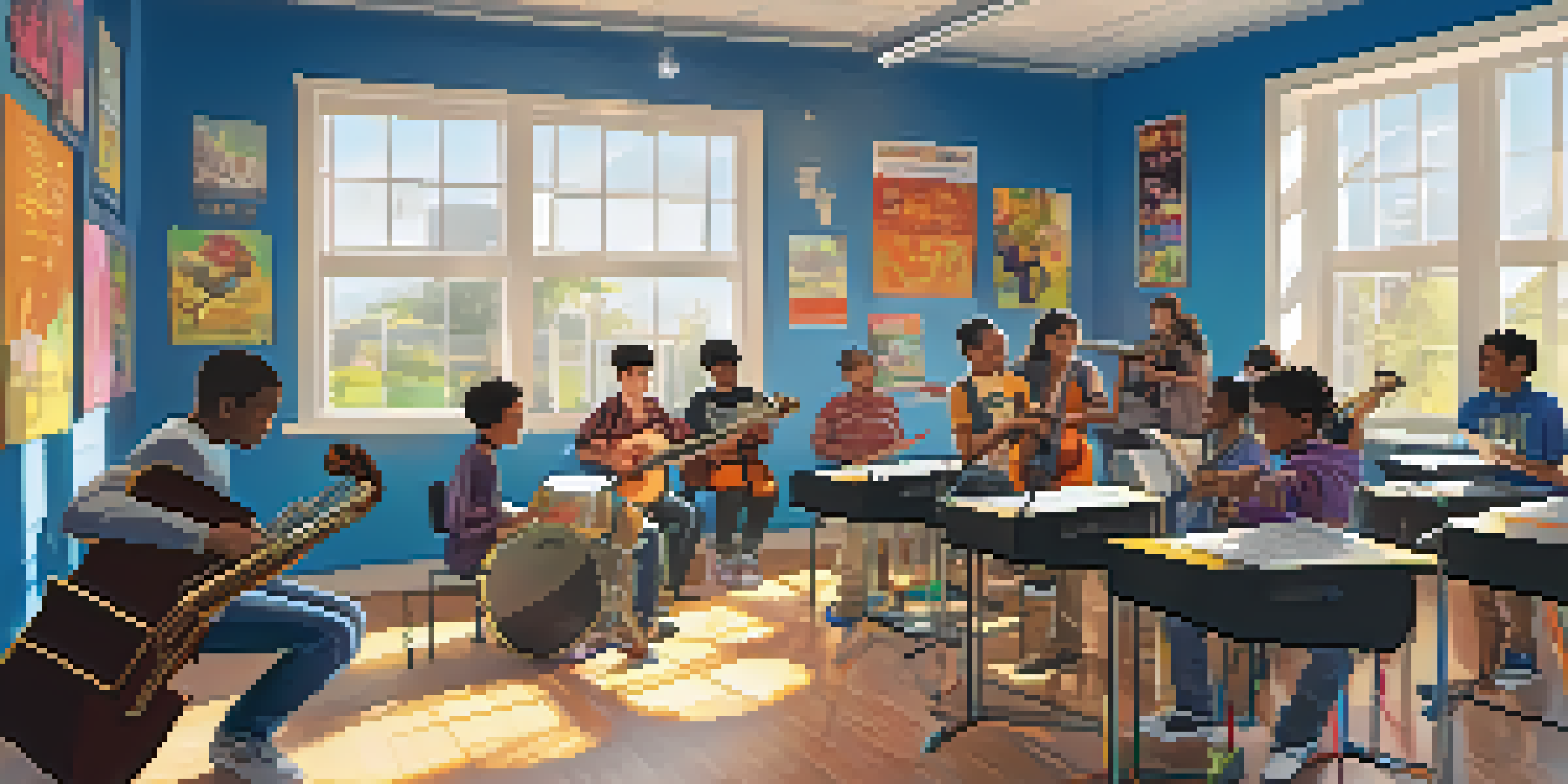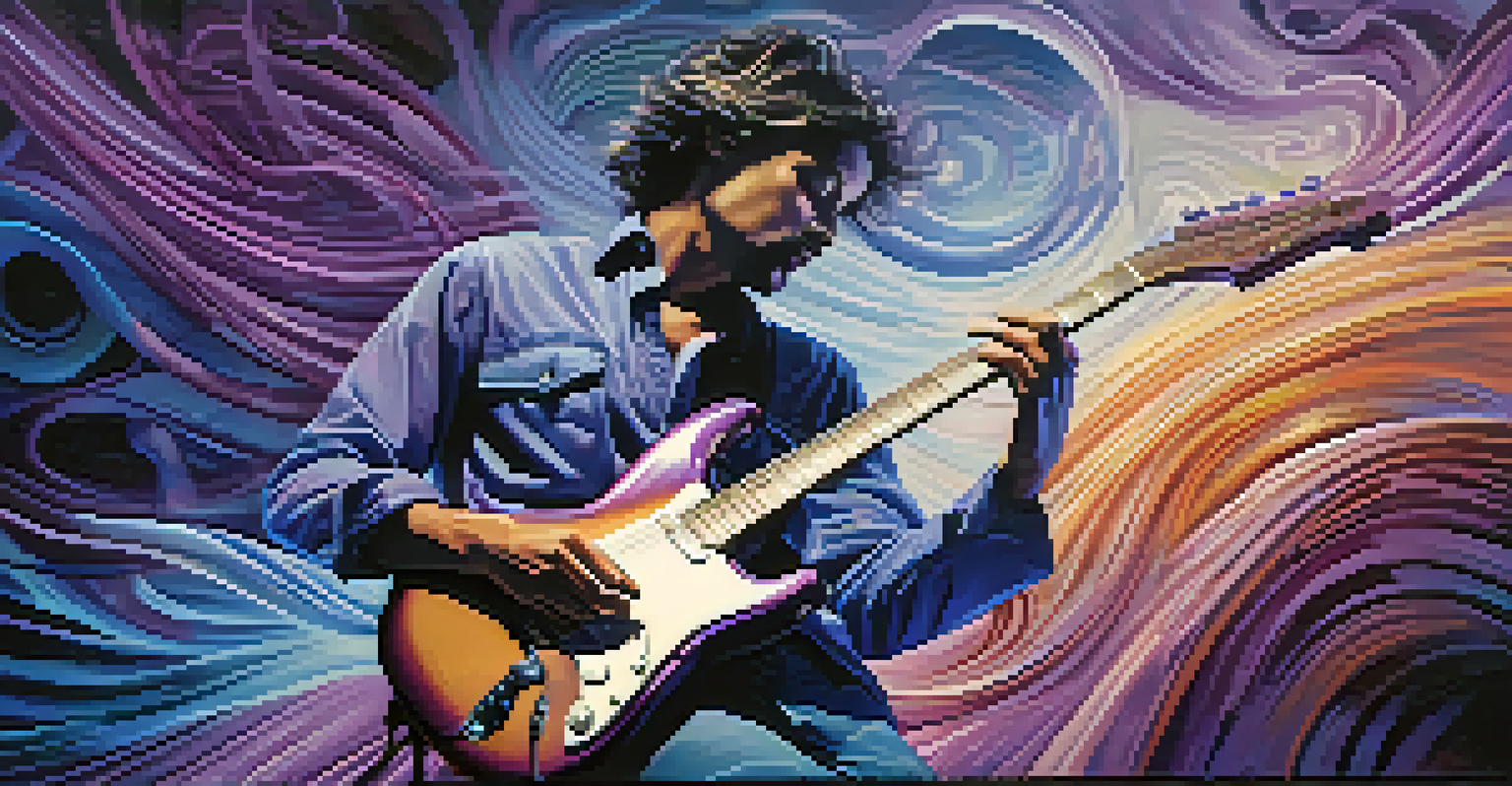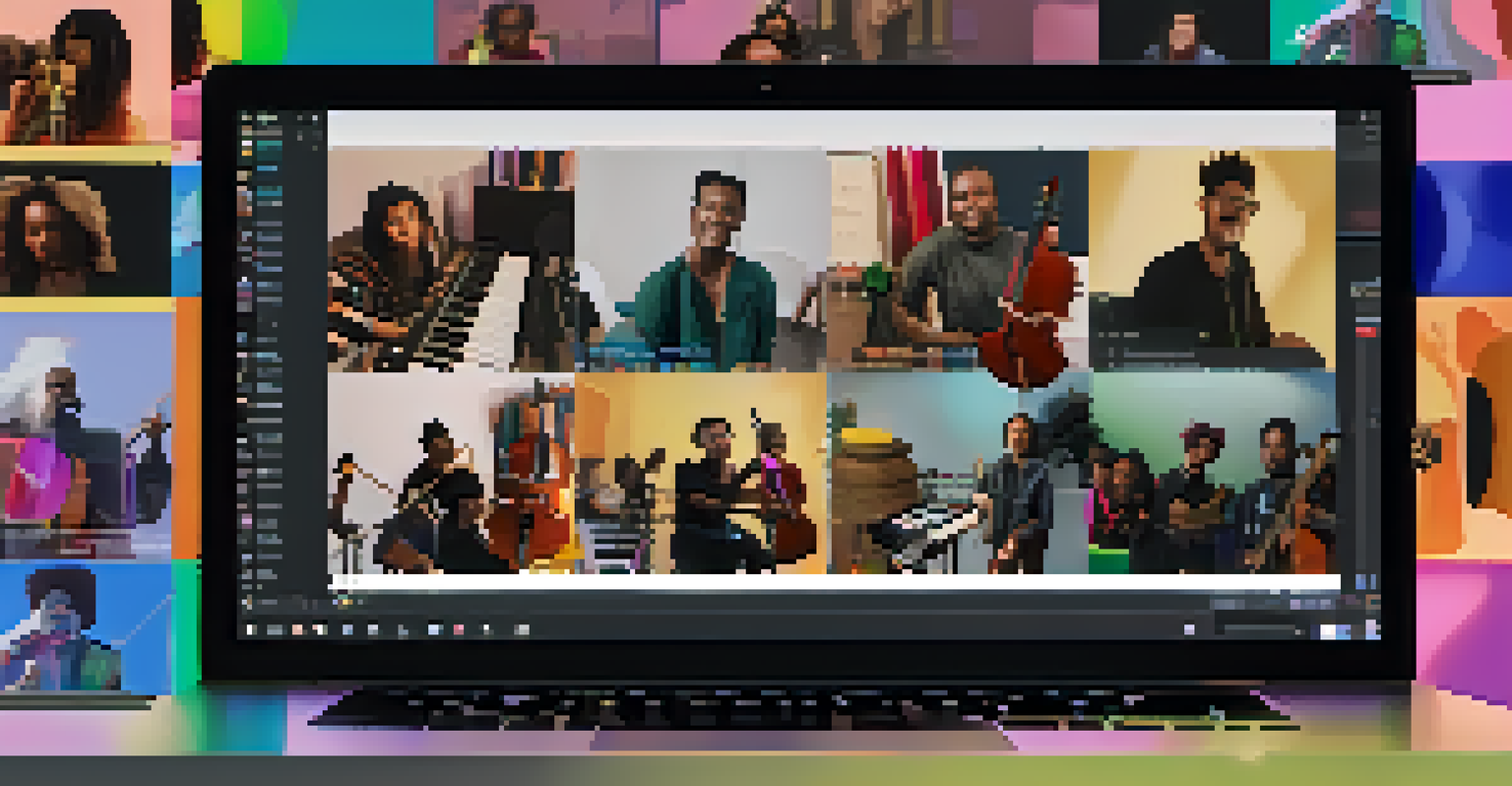Using Technology to Teach Music Improvisation Techniques

The Importance of Music Improvisation in Learning
Music improvisation is a vital skill that encourages creativity and expression. It allows musicians to explore their instrument and develop a personal style. By improvising, students learn to think on their feet and respond to musical cues, which is essential in many genres.
Improvisation is the ability to create something spontaneous and new, it fosters creativity and deeper understanding in music.
Moreover, improvisation fosters collaboration among musicians, making it a key component in ensemble settings. When musicians improvise together, they build a deeper understanding of harmony, rhythm, and structure. This collaborative aspect not only enhances technical skills but also creates a sense of community and shared experience.
Incorporating technology into teaching improvisation can make these lessons even more engaging. With the right tools, students can experiment with different sounds and styles, pushing the boundaries of their musical capabilities.
Digital Tools for Teaching Improvisation
There are numerous digital tools available that can facilitate music improvisation teaching. Apps like GarageBand or Logic Pro allow students to create backing tracks, making it easier to practice improvisation in a safe and controlled environment. These platforms provide a variety of sounds and instruments, encouraging experimentation and creativity.

Additionally, software like MuseScore enables students to notate their improvisations, helping them visualize musical ideas. This not only aids in learning but also allows students to share their compositions with others. The ability to record and playback performances is another invaluable feature that enhances the learning process.
Improvisation Boosts Creativity
Music improvisation encourages students to explore their instruments and develop a personal style, enhancing their creativity and expression.
By integrating these digital tools into lessons, teachers can cater to various learning styles. Whether a student is a visual learner, auditory learner, or kinesthetic learner, there’s a technology that can support their development in improvisation.
Online Platforms for Collaborative Learning
In today's digital age, online platforms provide unique opportunities for collaborative music improvisation. Websites like Soundtrap allow musicians to jam together in real-time, regardless of their physical location. This opens up a world of possibilities for students to connect with peers and learn from one another.
Technology has the power to enhance the learning experience, allowing students to explore their creativity and express themselves in ways that were previously unimaginable.
Moreover, these platforms often include features for recording and sharing sessions, enabling students to analyze their improvisation skills. They can listen back to their performances, identify strengths, and pinpoint areas for improvement. This instant feedback loop is crucial for developing musicians.
The collaborative nature of these platforms also fosters a sense of community. Students can support and motivate each other, creating an encouraging environment that enhances their learning experience.
Utilizing YouTube and Online Tutorials
YouTube is a treasure trove of music tutorials, including improvisation techniques. Many professional musicians share their tips and tricks, breaking down complex concepts into easy-to-understand lessons. These videos can serve as a supplementary resource for students looking to enhance their skills.
Watching experienced musicians improvise provides insight into their thought processes and techniques. By analyzing their approaches, students can adopt new strategies and discover different improvisational styles. This exposure can inspire students to experiment and find their unique voice.
Digital Tools Enhance Learning
Incorporating digital tools like apps and software into music lessons provides diverse resources that cater to various learning styles.
Furthermore, the comments section often serves as an informal forum for discussion. Students can ask questions, share experiences, and connect with other aspiring musicians, enriching their learning journey.
Incorporating Music Software into Lessons
Using music software in lessons can greatly enhance the way improvisation is taught. Programs like Ableton Live and Sibelius allow students to compose and manipulate sound in real-time. This hands-on approach encourages exploration and experimentation, which are essential for developing improvisational skills.
Additionally, these software programs often include built-in tutorials that guide students through various techniques. This self-paced learning model allows students to progress at their own rate while still receiving structured guidance. It’s a win-win for both teachers and students.
Moreover, students can create their own backing tracks and experiment with different genres. This helps them to understand the context of improvisation better, enabling them to apply their skills to various musical styles.
The Role of Artificial Intelligence in Music Learning
Artificial intelligence (AI) is increasingly making waves in the music education space, offering personalized learning experiences. AI-driven applications can assess a student's performance and provide tailored feedback, helping them to improve their improvisational skills. This technology makes learning more adaptive and responsive to individual needs.
For instance, AI tools can analyze a student's improvisation and suggest areas for improvement. They can even generate accompaniment tracks that adapt to the student’s playing style, creating a unique practice environment. This level of customization can significantly boost a student's confidence and creativity.
AI Personalizes Music Education
Artificial intelligence offers tailored feedback and adaptive learning experiences that help students improve their improvisational skills.
By blending traditional teaching methods with AI technology, educators can create a rich learning experience. This not only keeps students engaged but also prepares them for a future where technology and music are increasingly intertwined.
Encouraging Creativity Through Technology
Ultimately, the goal of using technology in teaching music improvisation is to encourage creativity. By providing students with a variety of tools and resources, they are more likely to explore and experiment with their musical ideas. This freedom to create can lead to unexpected discoveries and personal growth.
Moreover, technology can help break down barriers that some students may face in traditional learning environments. It allows for a more personalized approach, where students can learn at their own pace and in their own style. This empowerment can ignite a passion for music that lasts a lifetime.

As educators, it's crucial to embrace these technological advancements and integrate them into teaching practices. By doing so, we not only enhance the learning experience but also prepare students for the evolving landscape of music.